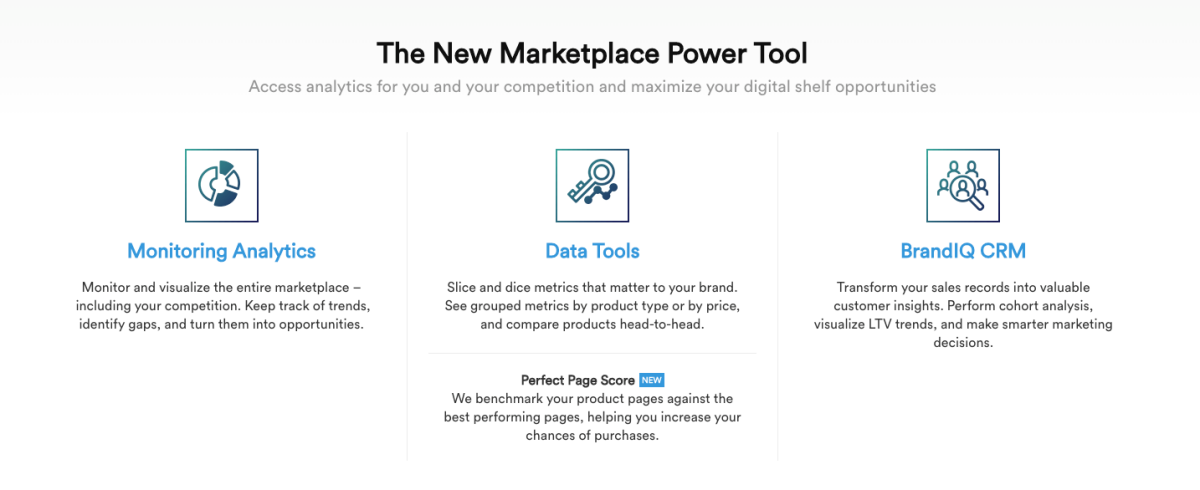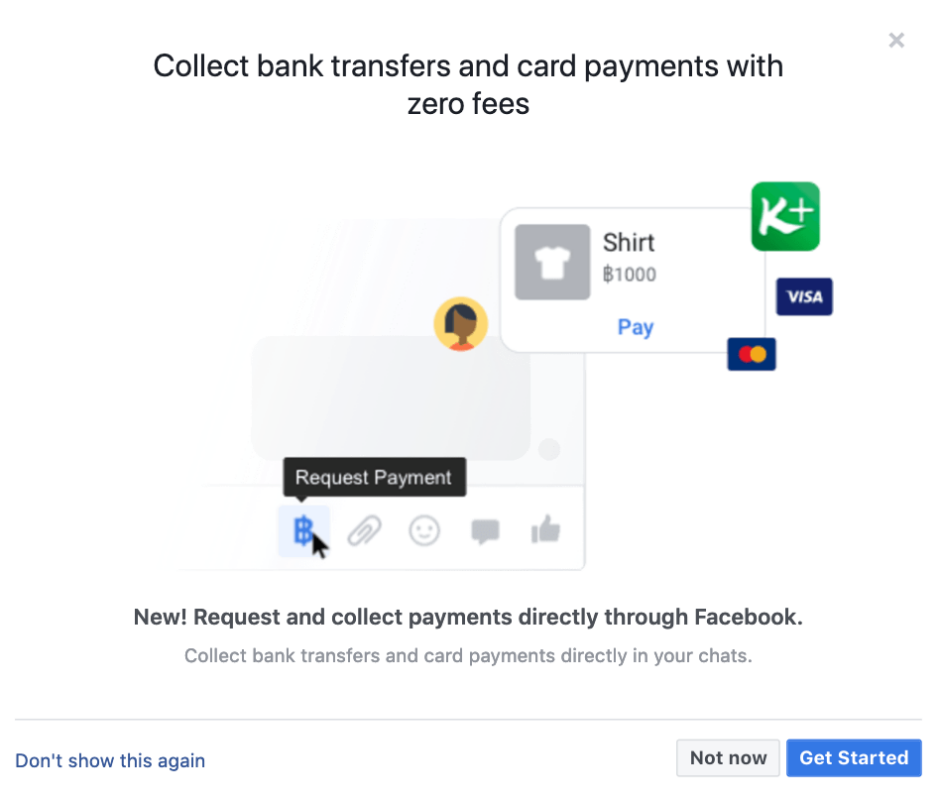ecommerceIQ Reveals 8 Trends That Will Shape Southeast Asia Ecommerce in 2019
One hundred two billion dollars. That’s how much the value of ecommerce in Southeast Asia is estimated to exceed by 2025.
The latest e-Conomy of Southeast Asia report by Google and Singapore-based Temasek confirmed the growing confidence among investors in the region. Startups raised $9.1 billion in the first half of last year, almost as much as throughout the whole of 2017.
2018 was dubbed as the year of ecommerce for the region, so what can we expect in 2019? We speak to industry leaders to discover the anticipated trends for online retailers and brands in Southeast Asia.
1.Brands Shift Their Focus from Data Gathering to Data Utilization
The biggest differentiator between online and offline retail is the ability to track, collect, monitor, and manage information, all in real time.
Through online channels, brands are able to access customer data through chats, social media, and their own websites. This information can be used to devise online strategies. Globally, 73% of brands plan to allocate their ecommerce budget on data & analytics services in 2019.
However, despite general agreement of its importance, many brands have no concept of how to utilize data to their advantage.
Even today, not all retailers have embraced data fully to the point where they think of themselves as data companies, and this might be why many companies are suffering.
Harvard Business School Professor Srikant M. Datar.
Data collection is easy but having and optimizing the analytics capability to use it is a completely different ball game.
A survey by ecommerceIQ identified data analysis as one of the most difficult skills to find among the digital talents in Southeast Asia. Brands are constantly searching for data aggregators to consolidate information into one place for convenient retrieval and use to target, retarget, and personalize products and services.
Reagan Chai, Head of Regional Business Intelligence and Business Development at Shopee told ecommerceIQ that data acquisition enables the company to map out and optimize buyer and seller user experience while pre-empting customer demand and anticipating future potential. The company has seen an increase of website traffic in the past year that even surpasses the other regional players.
In China, Alibaba and JD.com have taken this a step further by utilizes the data gathered online to improve inventories and experiences at their physical stores. Alibaba Chief Marketing Officer, Chris Tung said the company wants to help brands find the right consumers by tracking them throughout Alibaba’s system.
We’re finding all data that has to do with people, their behavior, what they like, what they buy and binding this online data to real people
concluded Chris
Earlier last year, the region’s leading brand ecommerce enabler, aCommerce, launched a data analytics platform BrandIQ to enhance their capabilities as a data partner to help brands centralize their customer data and offer customized products or services to each target group.
 2.Social Commerce Channels are Brands’ New Sales Outlets
2.Social Commerce Channels are Brands’ New Sales Outlets
Social commerce in this region boomed before the rise of ecommerce as we know now.
Facebook groups have long established as an online space where people connect to buy and sell goods, even before the launched of Marketplace feature. The rapid growth in Southeast Asia is propelled by the mobile adoption and smartphone, where 90% of the online population access the internet via smartphones. For some, Facebook even defines the internet itself.
With multitudes of potential customers gathered in social media platforms, brands naturally espied alternative sales channels. Following Facebook’s footsteps, social platforms like Instagram and Pinterest have also developed their own shoppable features.
Brands will miss out if they don't have a social media presence. The best way to get feedback from consumers is by having a direct conversation
Deb Liu, Vice President, Facebook Marketplace told Forbes.
LINE recently acquired a social commerce management startup Sellsuki in Thailand, where it has the second biggest user base, to build a strong foundation for its ecommerce business. The company has also formed a joint venture with three local banks to offer personalized loans to SMEs.
A few big brands like L’Oreal have already equipped their social media page with ‘Shop’ feature that allows consumers to purchase the order directly on the page and it’s only a matter of time before more brands activate the platforms as one their sales channels and remove another layer between them and the consumers.

3.E-Marketplaces Launch New Services to Differentiate
Looking at the successful existing ecommerce players in more developed markets, one thing they have in common is full control over their supply chain.
JD.com’s investment to the development of their own supply chain allows them to scale their technology and offer Retail-as-a-Service proposition to help other retailers or brands sell online. Alibaba is unrivaled for to its extensive ecosystem beyond commerce, including a logistics network Cainiao, a payment firm Ant Financial, not to mention its recent foray into the entertainment industry.
The same practice has infiltrated down to Southeast Asia. Lazada has strengthened its logistics arm FBL (Fulfilled by Lazada) post the acquisition, and although no concrete plans has been disclosed, Shopee has expressed the intention to build its own logistics network.
More e-marketplaces are coming up with new services to get more sellers onboard. Singapore’s Qoo10 is set to launch its blockchain-based ecommerce site QuuBee this year, leveraging the blockchain technology to eliminate the transaction and listing fee which in turn increase the retailers’ profit margin and make a more sustainable commerce approach.
In Indonesia, Tokopedia is set to offer “Infrastructure-As-a-Service” with the fresh $1.1 billion funding. They also plan to use AI for customer care services and to run credit checks on merchants seeking loan to expand their businesses.
Facebook is also showing more of intention to jump into the bandwagon that is the region’s ecommerce. The social network has launched Marketplace feature in Thailand and Singapore without much fanfare, but the recent partnership with Kasikorn Bank in Thailand to allow in-app payment feature might be the start of the company’s effort to bulk up its commerce capabilities and cater to those that utilised the platform for their business.

The practice is not exclusively done by the general e-marketplaces. Fashion e-marketplace Zilingo scored $226 million in funding due to their new focus to build a network of fashion supply chain that anyone, small merchants or big retailers, can tap into.
It’s imperative for us to build products that introduce machine learning and data science effectively to SMEs while also being easy to use, get adopted and scale quickly. We’re re-wiring the entire supply chain with that lens so that we can add most value
revealed Zilingo CTO Dhruv Kapoor to TechCrunch.
In a bid to recruit more brands to sell on their platforms, we anticipate that e-marketplaces will continue to go head-to-head with each other through new services, acquisitions, and partnerships. Ready to burn more cash to win in this battle, e-marketplaces?
4.Brands to Reinforce Reviews and Fund User-Generated Content to Win Ecommerce Consumers
E-marketplaces in Southeast Asia has been upscaling and building add-ons which provide consumers with the utmost convenience. The search for better technology and assistance for the consumers is constant and never-ending.

Online consumers begin their online purchasing journeys by searching for product information or reading reviews, usually on the e-marketplace platforms, before making their purchase decision. They are looking for real opinions and user-generated reviews to validate the products.
The habit of leaving product reviews on ecommerce platform is not as common in Southeast Asia as it is in the US — Amazon even have dedicated page for top reviewers — and when they do, the reviews usually left little information about the product and more about the other aspect of the purchase (i.e. delivery time, packaging, etc).
Platforms like ReviewIQ are used by brands to increase their ratings and reviews engagement on their e-marketplace listings to help boost consumers make their decision. While the use of chatbots is an increasingly popular solution to help smooth the online customer experience, it’s more suitable for generic questions such as “where is my order?” or “is this product available?” instead of personalised questions such as
will this lipstick look good on a yellow-undertone skin?
Community-crowd model like one that’s popular with travel platforms such as Airbnb might also be suitable for ecommerce in the region to help consumers get passed their apprehension with online shopping — something that Edouard Steinert, aCommerce Thailand’s Director of Channel Management, is investigating to help the company’s clients as this model have proved to save time, increase results, and keep costs low.
Consumers today want to hear genuine feedback and reviews about a product and become more averse to hard-sell methods. [User-generated] Reviews, especially from people who share the same passion with them, proved to drive better conversion for the brand
added Edouard Steinert.
5.Brands Employ Direct-to-Consumer strategies to Acquire Direct Consumer Data
89% of companies are now competing mostly on a customer experience playing field and the Direct-to-Consumer (DTC) approach is becoming more important for brands as it allows them to gain insights into their end users and anticipate their needs.
One trend observed among brands to promote DTC is ecommerce subscription. From a consumer perspective, subscription offers convenient, personalized, and often cheaper way to buy what they need. For brands, it’s a subtle method to create customer loyalty in the digital landscape.
One brand adopting subscription ecommerce in the region is Nescafe Dolce Gusto, offering free coffee machines in exchange for a minimum 12-month subscription. Besides witnessing sales growth, Nescafe Dolce Gusto also noticed that consumers continued to purchase goods from its brand despite dropping out of the subscription plan.
They may have dropped out of the subscription but not the brand. They still buy capsules from different channels; ecommerce website, online marketplaces, and supermarkets. A subscription strategy is not just a long-term consumption enabler but also a consumer acquisition channel for the whole brand
aCommerce’s Regional Director of Project Management, Mandy Arbilo said that e-sampling is a popular strategy employed by brands to evaluate the demand, especially ecommerce.
While normal sampling techniques used by offline retailers are expensive, e-sampling saves brands up to 40% as well as providing essentials customer data.

6. 2019 Will Finally see Regulation of Ecommerce across the Region
Ecommerce practice in the region has remained largely unregulated as a nascent occurrence. As the industry grows, it is only a matter of time until governments step in to tax this fast-growing segment and level the playing field for foreign companies to offer digital services and goods locally.
News of the implementation of ecommerce tax regulations in Southeast Asian countries has been floating around since the beginning of last year but nothing concrete has as yet materialized.
A couple of months ago, Economic Ministers from the Association of Southeast Asian Nations (ASEAN) signed an agreement to facilitate cross-border ecommerce transactions within the region.
However, while nothing has written in stone, predictions abound concerning the impacts of ecommerce tax on imported goods into the region. In Indonesia and Thailand, ecommerce tax is predicted to bolster the growth of social commerce because, unlike marketplaces, they are uncontrolled.
If tax regulations restrict ecommerce platforms, making selling in Bukalapak complicated, there will be an exodus of people who prefer selling on Instagram and Facebook. These platforms are uncontrolled and not chased for tax because they sell through the back door
Bukalapak co-founder and Chief Financial Officer Muhamad Fajrin Rasyid.
Singapore might also see a decrease in cross-border shopping as prices increase with the introduction of Goods and Service Tax (GST) on ecommerce goods and services from overseas. Currently, 89% of all cross-border transactions in the Asia Pacific region are conducted by Singaporeans.

Looking at another high-potential ecommerce market, India introduces the new e-marketplace laws that indicate the prohibition of marketplace “owners” to sell products on their own marketplace through vendor entities in which they have an equity interest. It also prevents marketplaces to make deals with sellers that grants the marketplace exclusivity rights on the product. Could we see such laws be applied in Southeast Asia?
Regardless, brands will have very little influence on how the new tax policies take root but they will be behoven to anticipate the ruling and adjust online strategy accordingly to mitigate the impact of a shift in customer behavior. This ASEAN agreement will encourage more local entrepreneurs to create new products and venture online to access a larger and more diverse market. Brands will now need to be nimble and innovative to adapt to local nuances and preferences.
7.Grab and Go-Jek Challenge Logistics Providers to Capture Ecommerce and Online Food Delivery
Since Uber’s exit last March, Grab monopoly in countries like Thailand, the Philippines, and Malaysia has led to complaints about services and prices increased which resulted in protests from consumers and fines from governments which hit the headlines of the Filipino newspapers and Singaporean watchdogs.
But with the recent regional expansion from Indonesia’s Go-Jek, the competition between the two will only get fiercer. Go-Jek has successfully carved their existence in Vietnam, Singapore, and Thailand last year alone. In addition, Grab’s competitor in Malaysia, Dacsee, has also expressed the plan of expanding to Thailand.
Both companies are not racing to be the best ride-hailing providers, they’re aiming for something much bigger; superapps. Go-Jek has secured $1 billion funds from Google, Tencent, and JD.com in part of their plan to raise $2 billion for this venture. Meanwhile, Grab recently nabbed $200 million investment from Thailand’s Central Group, boosting their valuation to 11 billion to date.
2019 will see these two competitors steer toward the same goal of food and ecommerce delivery. Google and Temasek reported that the online food delivery business grew 73% CAGR in 2019. By 2025, they predict online food delivery growth at 36% CAGR with online transport only 23%.

We will be expanding our GrabFood and delivery business and deepening our relationships with restaurant merchants and key partners in some markets
said Grab’s head of regional operations Russell Cohen.
Same-day delivery providers are going to feel more competition next year. The impact of Grab and Go-Jek on market vibes will definitely raise the bar for the logistics and delivery sector.
8.Brands and Retailers will Double Down on Omnichannel is Southeast Asia’s Preference over Pure-Play Ecommerce
The omnichannel shopping experience is not a new concept, but companies do have diverse interpretations of the concept. Headlines revealed that online retail behemoths, such as Amazon and Alibaba, are moving into physical retail.
The main reason why Alibaba ventured out of online space reflects its determination to solve core problems of the shopping experience, such as scattered operations and lack of payment transparency.
JD.com pipped Alibaba for once by opening the first unmanned convenience store in the region in Jakarta to leverage the enormous database by offering beneficial insights to brands such as the best products to stock and advertise. Through their JV with Central Group in Thailand, JD Central also planning the similar launch in the country by 2020.
Pure-play ecommerce retailers and brands recognized drawbacks in online marketing channels with fragmented infrastructure and a limited pool of shoppers. They promoted offline as an attractive option to push sales growth.
Elsewhere in Southeast Asia, companies are slowly but surely adopting this strategy across all categories. Ecommerce fashion players like Thailand’s Pomelo and Singapore’s Love, Bonito have opened physical stores in their respective countries.
In 2018, Pomelo opened 5 new outlets, embarking away from Bangkok’s prime shopping areas to central business districts (CBDs) like Asoke and residential areas of Bangna. Meanwhile, Love, Bonito has 17 retail outlets spread across Singapore, Malaysia, Indonesia, and Cambodia.
Rachel Lim, Co-Founder of Love, Bonito told Peak Magazine,
Data can tell you what’s selling but being on the ground tells you why something is not selling and what the customer is looking for
Visiting shopping malls is a popular social activity in Southeast Asia and this trend is not set to disappear anytime soon. Brands should take advantage of dual physical and online presence.
ลงทะเบียนเข้าสู่ระบบ เพื่ออ่านบทความฟรีไม่จำกัด






